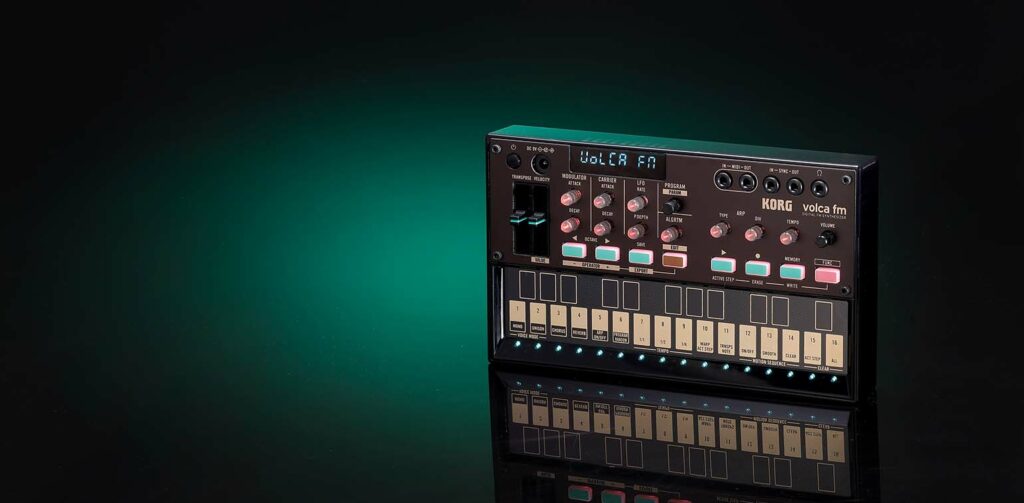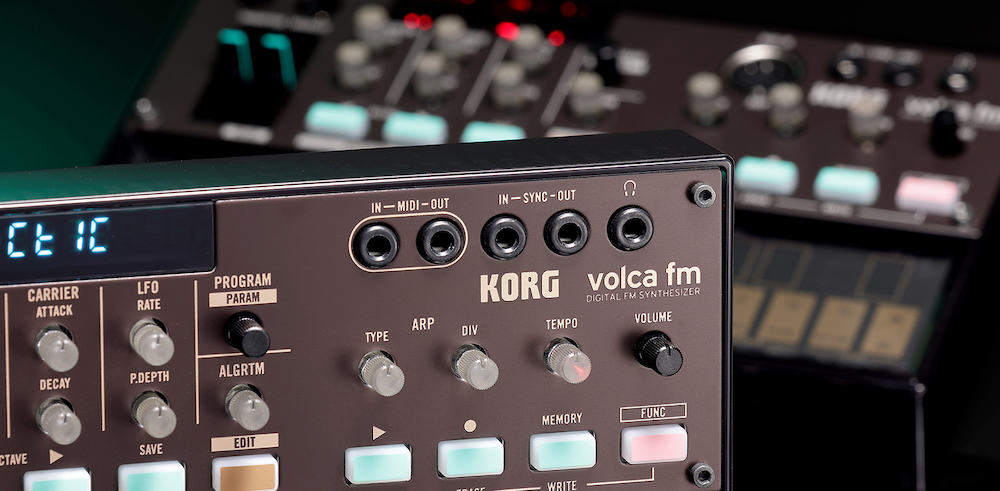Updated with more powerful sound and improved control, the Volca FM is now even more capable. Greg Scarth finds out more.

It’s easy to take the Korg Volca series for granted now, which just goes to show how much of an impact these little instruments have had. When they were released back in 2013, we were all surprised by the idea that affordable synths and drum machines could deliver pro sound from a portable format. The Korg Volca FM 2 is part of a select few models which have been updated since their original introduction, along with the likes of the Volca Sample 2 which we reviewed back in 2020. The updates this time around focus on expanding the sound capabilities and adding some key features. Whether you’re a newcomer to hardware synths or a hardcore Volca stan, there’s a lot to explore here.
The next-generation Volca series sticks to the same formula which made the original models popular. All the instruments in the series are portable, battery-powered devices with built-in speakers, sequencers and usually some kind of effects. They’re designed so that you can use one Volca on its own as a kind of groovebox for sequencing patterns and experimenting with sound, or you can connect one or more Volcas together with other studio equipment as part of a bigger hardware setup. The first few Volcas were mainly analogue instruments, but the Volca FM is proudly digital, using the same frequency modulation (FM) synthesis most closely associated with the legendary Yamaha DX series of the 1980s. The DX models were pioneering for the time, offering more realistic impressions of acoustic and electric instruments than traditional analogue synths could achieve. The DX7 was the sound of 80s pop and rock (think most of the sounds on Tina Turner’s ‘What’s Love Got to Do With It’), while also a favourite of Brian Eno for his ambient work. The cheaper DX100 was also a cult favourite for Detroit techno producers in the late 80s.

In terms of basic operation, it’s unsurprising that the FM 2 sticks quite faithfully to the original concept. There are no radical new concepts here, just a refinement of what already made the original Volca FM good, which largely revolves around the very well implemented synth engine. There’s a certain retro sci-fi quality to the sound of FM synthesis which lends itself perfectly to techno and electro, but the range of the Volca FM has always been impressive. Jamming out some basic ideas using the sequencer, the best place to start is by scrolling through presets and editing them slightly. Choosing different algorithms, for instance, reveals how dramatic changes can result from routing the ‘operators’ (digital oscillators) into each other in different ways. Adjusting the depth of modulation can range from a subtle shift in timbre through to complete destruction of the sound. FM synthesis isn’t necessarily the easiest way to build sounds from scratch, but it responds well to this kind of iterative approach, tweaking a parameter and then another one until you end up with a completely new sound to the one you started with. The introduction of a new program randomiser function supports the theory, “letting you find new inspiration through happy accidents and unexpected patches” as Korg put it.

On which point, the other changes to the second-generation model are similarly well thought out. The headline feature is that the polyphony (the number of simultaneous voices or notes the synth can play) has doubled from three to six, which makes the FM 2 far more capable for chords and complex multi-layered parts. Elsewhere, there’s now a MIDI output as well as an input, but perhaps more importantly the FM 2 now responds to velocity over MIDI, making it more expressive when played with a separate keyboard or triggered via a DAW. There’s also a new reverb effect in addition to the chorus effect from the first-gen model. In isolation they’re relatively small upgrades, but the increased polyphony in particular is enough to make the FM 2 a big step up from the original model.

The Volca FM isn’t just a Yamaha DX clone, but looking at second-hand DX prices does put the value of the Volca into perspective; a decent DX7 will set you back well over £600 these days, with even the humble DX100 pushing £400. For under £150, the Volca FM 2 will do most of what an original DX can – you can even loads DX programs directly into the Volca via MIDI – but so much more. Korg know better than to mess too much with the Volca formula, but the improvements here make the Volca FM even better the second time around. Another guaranteed hit, and a great starting point for anyone wanting to explore the accessibility and creativity of hardware synths.
Greg Scarth
More info/buy